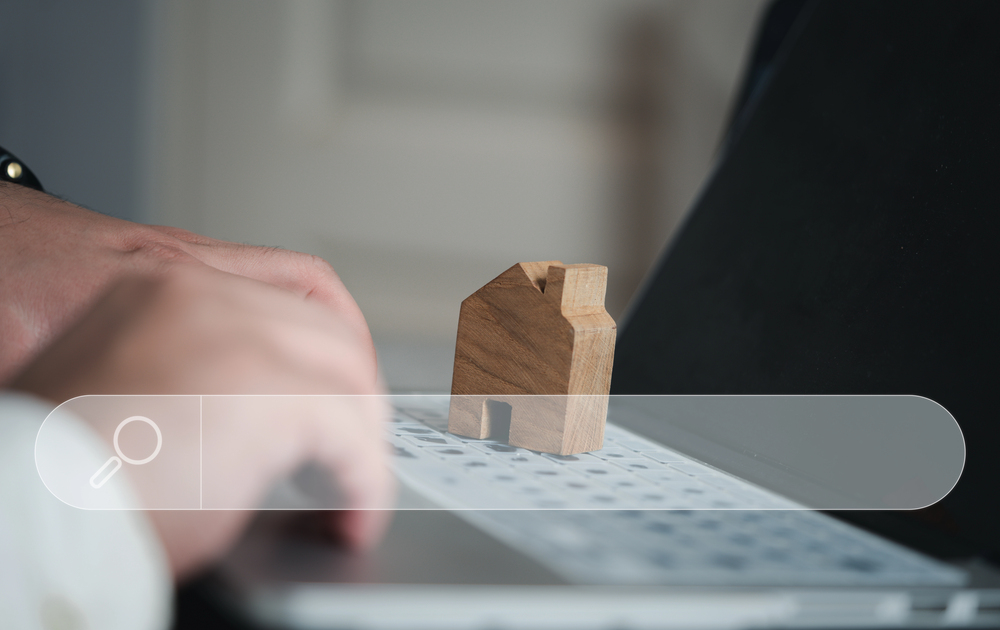The Reality of Working From Home in 2025
Working from home isn’t just about avoiding the commute anymore. It’s about mastering a completely new way of working that can either skyrocket your productivity or leave you feeling isolated, distracted, and burnt out.
Here’s the truth: 67% of remote workers struggle with work-life boundaries, 43% report feeling lonely, and 29% cite overworking as their biggest challenge (Buffer’s 2025 State of Remote Work Report).
But here’s the good news: Remote workers who implement proven strategies consistently outperform office workers by 13-15% in productivity metrics while reporting 22% higher job satisfaction.
This comprehensive guide shares 15 battle-tested working from home tips that actually work—based on research, real remote worker experiences, and proven productivity science.
Looking for working from home tips that actually make you more productive? Whether you’re new to remote work or already a seasoned telecommuter, these 15 proven strategies will help you stay focused, improve work-life balance, and build a home office setup that works for you. Let’s dive into the most practical working from home tips for 2025 that truly deliver results.
Types of Remote Workers: Who This Guide Is For
Remote work isn’t a one-size-fits-all experience. Different roles, schedules, and lifestyles create unique challenges — and the solutions that work for one group may not work for another. Before applying the productivity tips in this guide, identify which type of remote worker you are.
Before diving into tips, identify which type of remote worker you are:
Full-Time Remote Employee – Works 100% remotely for a company
Hybrid Worker – Splits time between home and office
Freelancer/Self-Employed – Sets own schedule and clients
Remote Parent – Balances childcare with work responsibilities
Digital Nomad – Works while traveling
New to Remote – Recently transitioned from office work
Different challenges require different solutions, and this guide addresses all scenarios.
Why Working From Home Tips Matter More Than Ever in 2025
The remote work landscape has evolved dramatically. What worked in 2020’s emergency remote work setup won’t cut it in today’s competitive environment. Companies now expect 15-20% higher productivity from remote workers compared to their office counterparts, according to Harvard Business Review’s 2025 Remote Work Study.
The stakes are higher because:
- 42% of companies plan to reduce office space by 2026, making remote work permanent
- Remote workers who implement proper strategies earn 8.2% more on average
- Poorly managed remote work leads to 23% higher turnover rates
- Effective remote workers report 31% higher job satisfaction
The best working from home tips 2025 focuses on three critical areas: productivity optimization, technology mastery, and mental health maintenance. Master these, and you’ll join the top 15% of remote workers who consistently outperform office-based colleagues.
Essential Home Office Setup Tips: How to Create a Productive Environment
1. Set Genuine Work Hours (And Adhere to these work hours, no matter what)
You can technically work at any time, but that doesn’t mean you should. Balance, prioritize tasks, and then select hours that fit your lifestyle and schedule. It can be from 9–5, or 8–3, or even two chunks in the day—and stick to them.
When your workday ends, actually end it. Close that laptop. Walk away. Relax and rejuvenate. This relaxation is essential for maintaining energy and vigor for the next day.
2. Create a Dedicated Workspace
Avoid working from your bed or couch. A clear, ergonomic home office setup boosts focus and signals your brain it’s time to work.
Pro Tip: Add natural lighting and a plant to enhance energy and creativity.
3. Dress Like You’re Going to the Office
Getting dressed puts you in a professional mindset. Even casual, clean clothes can improve confidence and motivation during your workday.
4. Take Regular Breaks
Avoid burnout by taking 5–10 minute breaks every hour. Use techniques like Pomodoro (25 minutes focus + 5 minutes break). It helps maintain energy and mental clarity.
5. Move Every Hour
Remote work often leads to sitting for long periods. Stretch, walk around, or do light exercises to keep your energy levels high.
Helpful Tools: Stretchly, Stand Up!, or Apple Watch reminders.
6. Start with a Simple To-Do List
Begin each day by listing top 3 priorities. Prioritize important tasks before smaller ones — a core remote work productivity principle.
Productivity Systems & Techniques for Remote Workers
Most remote workers lose productivity not because of lack of skills, but because they don’t use a structured system. These proven frameworks help you organize tasks, maintain focus, and achieve more in less time.
Time Management Techniques
1. Pomodoro Technique
A simple but highly effective focus method.
How it works:
-
Work for 25 minutes
-
Take a 5-minute break
-
After 4 cycles, rest for 15–30 minutes
Best for: Deep work, writing, analysis
Tools: Focus Keeper, Forest, Tomato Timer
Why it works: Prevents mental fatigue and boosts concentration.
2. Time Blocking
Plan your entire day by assigning time blocks for specific tasks.
How it works:
-
Block focused work, calls, breaks, and admin tasks
-
Batch similar activities
-
Add 10–15 min buffer zones
Best for: People managing multiple projects
Tools: Google Calendar, Clockify, TimeBloc
Why it works: Reduces multitasking and decision fatigue.
3. Eat the Frog Method
Do your hardest or most important task first.
Benefits:
-
Builds momentum
-
Reduces procrastination
-
Clears mental space
Best for: Remote workers with demanding priorities.
4. The Two-Minute Rule
If a task takes less than 2 minutes — do it immediately.
Use it for:
-
Emails
-
Quick approvals
-
Small requests
Why it works: Prevents tiny tasks from stacking up and overwhelming you.
5. Energy Management
Not all hours are created equal — work with your natural rhythm.
Steps:
-
Track high-energy and low-energy times
-
Schedule creative tasks during peak energy
-
Save admin tasks for low-energy hours
Best for: Anyone who wants sustainable daily productivity.
Task Prioritization Methods
Eisenhower Matrix
Sort tasks by urgency and importance:
| Category | Action |
|---|---|
| Urgent & Important | Do First |
| Not Urgent & Important | Schedule |
| Urgent & Not Important | Delegate |
| Not Urgent & Not Important | Eliminate |
Why it works: Helps remote workers avoid busywork.
ABC Method
A practical system for daily task prioritization:
-
A Tasks: Must be done today (high impact)
-
B Tasks: Should be done today (medium impact)
-
C Tasks: Nice to do (low impact)
Why it works: Keeps your day aligned with your goals rather than random requests.
7. Learn to Say “No” to Distractions
Social media and household chores can derail your focus. Use website blockers like Freedom or Forest to stay in “work mode.”
Conquering Home Distractions: Practical Solutions
Family & Household Interruptions:
When You Have Kids at Home:
– Create a visual “work indicator” (red light = don’t disturb, green = available)
– Set up activity stations for independent play
– Schedule work around nap times
– Use “quiet time” routines
– Communicate your schedule clearly
– Have backup childcare plans for important meetings
Roommates & Partners:
– Establish clear “office hours”
– Use closed-door policies
– Share calendars for important meetings
– Create noise agreements
– Designate “quiet zones” in shared spaces
Pets:
– Take dogs for morning walks before work
– Set up pet spaces near your workspace
– Use automatic feeders for regular schedules
– Schedule “pet breaks” into your day
– Consider pet cameras to check on them
Digital Distractions:
Social Media & News:
– Use website blockers (Freedom, Cold Turkey, StayFocusd)
– Delete apps from your phone during work hours
– Check social media only during designated breaks
– Use browser extensions to limit time
Notifications:
– Turn off ALL non-essential notifications
– Use Do Not Disturb mode
– Check messages at scheduled times only
– Separate work and personal notifications
Household Tasks:
– Create a “to-do later” list for household items
– Do chores before or after work, never during
– Set specific break times for quick tasks
– Meal prep on weekends
Website Blockers to Try:
– Freedom – $40/year, blocks apps and websites
– Cold Turkey – Free, aggressive blocking
– Focus – Mac-only, $20 one-time
– StayFocusd – Free Chrome extension
– RescueTime – Tracks and limits time spent
8. Eat Lunch Away from Your Screen
9. Stay Connected—Don’t Go Full Hermit
10. Create a Little “Clock-Out” Ritual
11. Eat and Hydrate on Schedule
Skipping meals or eating at your desk messes with energy levels. Plan two healthy snacks and drink water regularly.
Tip: Keep a glass of water next to your monitor as a visual reminder.
12. Separate Work and Personal Devices
If possible, keep one device for work and another for personal use. This digital boundary prevents burnout and helps you unplug after hours.
Use browser profiles (e.g., Chrome Work vs. Personal) if you share a laptop.
13. End Each Day with a Shutdown Ritual
When you’re done, be done. Close tabs, log out, and write a short note for tomorrow’s first task.
Tip: Physically turn off your work light or play a “shutdown sound” to signal your brain that work is over.
14. Invest in Ergonomics and Comfort
Neck and wrist strain can quietly destroy productivity. Adjust your monitor at eye level and use an ergonomic keyboard and chair.
suggested gear:
| Item | Example | Price | Benefit |
|---|---|---|---|
| Ergonomic Chair | Secretlab, Sihoo | $250–$500 | Posture & comfort |
| Adjustable Desk | FlexiSpot, Uplift | $300+ | Encourages movement |
| Blue Light Glasses | Felix Gray | $95 | Reduces eye fatigue |
15. Join Virtual Communities
Working remotely doesn’t mean working alone. Join online communities like Remote Workers Hub, Reddit r/Productivity, or LinkedIn Remote Work Groups.
Networking keeps you accountable and emotionally balanced.
Remote Work Tools That Actually Matter
- Communication: Slack, Teams, Discord
- Project Management: Asana, Trello, Monday
- Time Tracking: Toggl, RescueTime
- Focus: Freedom, Forest app
Video Meeting Best Practices
- Camera positioning
- Lighting setup
- Background choices
- Meeting etiquette
Dealing With Zoom Fatigue
- Schedule buffer time
- Audio-only meetings
- No-meeting days
The 30-Day WFH Transformation Challenge
Ready to reset your habits? Try this month-long roadmap:
Week 1: Optimize your workspace + fix lighting and ergonomics
Week 2: Implement time blocking + define work hours
Week 3: Add deep work sessions + limit screen time
Week 4: Improve work-life balance + start digital detox evenings
By the end of 30 days, you’ll work smarter, not harder — with better focus, health, and energy.
Common Mistakes to Avoid
-
Mixing work and personal spaces
-
Checking messages constantly
-
Skipping breaks
-
Neglecting communication
-
Working without a shutdown routine
Tips for Employers & Managers Managing Remote Teams
Managing remote employees requires clarity, trust, and intentional communication. The most successful remote teams thrive because their leaders create structure without micromanagement and support productivity without burnout.
Here’s what employers and managers should focus on:
For Managers
Set Clear Expectations
Define roles, responsibilities, deadlines, and KPIs.
Remote employees perform best when outcomes are clear and measurable.
Provide the Right Tools
Ensure your team has access to:
-
Project management tools (Asana, Trello, Monday)
-
Communication platforms (Slack, Teams)
-
VPN access and security tools
-
Video meeting tools
Productivity rises when barriers are removed.
Schedule Regular 1-on-1s
Weekly or bi-weekly check-ins:
-
Reduce miscommunication
-
Strengthen trust
-
Allow space to resolve challenges early
Consistency matters more than duration.
Avoid Micromanaging
Remote work fails when managers track every minute.
Focus on results, not online status or activity bubbles.
Cultivate Trust
Give employees autonomy. Empower them with decision-making opportunities. People perform better when they feel trusted.
Create Virtual Team-Building Opportunities
Casual Zoom coffee chats, game sessions, and team challenges keep morale high and reduce loneliness.
Provide Mental Health Support
Share wellness resources, counseling programs, and optional mental health days.
Offer Flexibility
Let employees manage their time zones, home responsibilities, or childcare needs when possible. Flexibility boosts retention.
Give Regular Feedback
Provide constructive, actionable, and timely feedback.
Remote employees rely heavily on clarity and direction.
Celebrate Wins Publicly
Recognize achievements in group channels or virtual meetings.
Positive culture keeps remote teams engaged.
For Employers
Invest in Home Office Equipment
Provide or reimburse essentials like:
-
Ergonomic chairs
-
Monitors
-
Headsets
-
Laptop stands
-
Keyboard + mouse sets
A proper setup reduces injuries and improves output.
Offer Internet or Tech Allowances
Even a small monthly stipend removes a major bottleneck for workers.
Implement Flexible Work Policies
Clear remote work policies should include:
-
Work hour expectations
-
Communication rules
-
Meeting schedules
-
Response-time guidelines
This creates consistency across the organization.
Offer Training on Remote Tools
Not everyone is tech fluent. Provide onboarding for tools your team uses daily.
Support Work-Life Balance
Discourage after-hour messages.
Promote boundaries.
Encourage taking breaks and PTO.
Create Virtual Social Activities
Optional team hangouts, monthly town halls, or wellness sessions keep culture strong.
Encourage PTO Use
Remote employees often skip vacations — remind them to take time off.
Focus on Output, Not Activity
Avoid tracking software or webcam monitoring.
The best companies evaluate deliverables, not hours logged.
Working from Home Tips by Category
Productivity Tips
-
Time-block your day
-
Use focus apps
-
Review priorities daily
Health & Wellness Tips
-
Stretch every hour
-
Stay hydrated
-
Maintain a balanced diet
Work-Life Balance Tips
-
Define work hours
-
Create an end-of-day routine
-
Limit screen time after hours
Let’s Wrap This Up: Working from Home Tips.
Frequently Asked Questions About Working From Home
How do I stay motivated when working from home alone?
Motivation while working from home comes from creating structure, maintaining social connections, and focusing on meaningful goals. Set up a reward system for completed tasks, schedule regular check-ins with colleagues or accountability partners, and break large projects into smaller, achievable milestones. Studies show that remote workers who maintain daily routines and regular social interaction report 34% higher motivation levels.
What equipment is absolutely essential for productive remote work?
The essential equipment includes: a reliable computer, high-speed internet (minimum 25 Mbps), a comfortable chair and desk, good lighting (preferably natural), noise-cancelling headphones, and a quality webcam and microphone for video calls. Professional remote workers invest an average of $1,200-2,000 in their home office setup, which pays for itself through increased productivity within 4-6 months.
How do I handle distractions from family members or roommates?
Create clear boundaries through communication and physical barriers. Establish “office hours” that everyone respects, use visual signals (closed door, headphones) to indicate focused work time, and have backup plans for important calls or meetings. Remote workers who proactively communicate their schedule and needs experience 48% fewer interruptions than those who try to manage distractions reactively.
Should I work from home every day or mix in other locations?
The optimal approach varies by individual, but research suggests that 2-3 days per week in alternative locations (coffee shops, coworking spaces, libraries) can boost creativity by 19% and prevent isolation. Experiment with different combinations to find what works best for your productivity, social needs, and job requirements.
How do I advance my career while working remotely?
Career advancement for remote workers requires intentional relationship building, visible contribution to important projects, and proactive communication about your goals and achievements. Schedule regular one-on-ones with your manager, volunteer for high-visibility projects, maintain relationships across the organization, and document your accomplishments clearly. Remote workers who are proactive about career development receive promotions at the same rate as office-based employees.
Find a Home-Based Business to Start-Up >>> Hundreds of Business Listings.















































